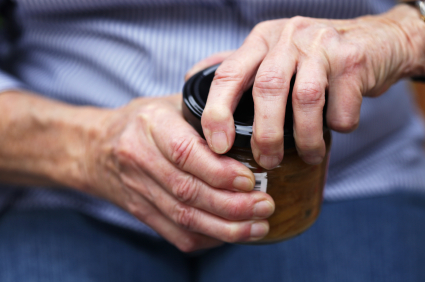The paper, published in Science, suggested conversations could increase support for same-sex marriage. Researchers who tried to replicate the study say the data were not collected as described.» E-Mail This
Category: HEALTHCARE/MEDICAL
Making an informed choice about indoor tanning
With May being Skin Cancer Awareness Month and in tandem with our event today co-hosted with the Congressional Families Cancer Prevention Program, The Hazards and Allure of Indoor Tanning Beds on College Campuses we are running a series on skin cancer. Be sure to check back daily for posts on skin cancer including how you prevent and detect it. Enjoy! I am so pleased to have the opportunity present on behalf of the American Academy of Dermatology (AAD) during “The Hazards and Allure of Indoor Tanning Beds on College Campuses” event co-hosted by Disruptive Women in Health Care and Congressional Families for Cancer Prevention of the Prevent Cancer Foundation that takes place today. The timing of this event is particularly appropriate for us because May
Lymphatic cells grown in the lab for the first time
For over one hundred years, scientists have debated the question of the origins of the lymphatic system – a parallel system to the blood vessels that serves as a conduit for everything from immune cells to fat molecules to cancer cells. This issue has now been resolved by Dr. Karina Yaniv of Weizmann Institute’s Biological Regulation Department. In a study reported online today in Nature, she and her team revealed how the lymphatic system develops in the embryo and for the first time managed to grow lymphatic cells in the lab.
Say no to Indoor Tanning Beds. Know More. Do Better.
With May being Skin Cancer Awareness Month and in tandem with our event today co-hosted with the Congressional Families Cancer Prevention Program, The Hazards and Allure of Indoor Tanning Beds on College Campuses we are running a series on skin cancer. Be sure to check back daily for posts on skin cancer including how you prevent and detect it. Enjoy! I CONFESS… I went to a tanning bed before attending a destination wedding, thinking I was getting a “base coat” that would prevent me from getting a sunburn. I used a sun lamp in high school, thinking it would clear my blemished skin. I used to wrap a vinyl record album cover with aluminum foil to create a sun reflecting visor in an effort to focus
Norman learns to show respect . . . again
I had the pleasure of meeting Norman Faull late last year in Johannesburg when we presented together some thoughts on process improvement to South African hospital folks. He is as kind, thoughtful, and respectful a person as you could imagine. So when he reports that he is not necessarily respectful, I take notice. His message is important, so please stick with me–especially if you are a Lean advocate or practitioner.Here’s a recent column he wrote. Excerpts:Some of us are not very good at showing respect.‘Show respect’ is one of the core calls we make to lean leaders. That simple phrase was presented to me at a Lean Summit in the USA around 2007. The speaker was John Shook and he was quoting from a
New techniques for reprogramming stem cells target neurological disease models
As scientists overcome the technical challenges in reprogramming stem cells to produce biologically precise models of human neurons, these emerging model systems will accelerate research on…
Earth’s First Snake Likely Evolved On Land, Not In Water
Genetic sleuthing and comparisons of recently discovered fossils with living snakes point to a “protosnake” ancestor that likely had tiny hind legs and lived about 120 million years ago.» E-Mail This
Home-Brewed Morphine Is Around The Corner
What if microbes could ferment sugar into narcotics, like the way yeasts make beer? That day is quickly approaching. This week scientists report all the steps needed to make morphine in yeast.» E-Mail This
Addressing the risks of indoor tanning
With May being Skin Cancer Awareness Month and in tandem with our event Wednesday co-hosted with the Congressional Families Cancer Prevention Program, The Hazards and Allure of Indoor Tanning Beds on College Campuses we are running a series on skin cancer. Be sure to check back daily for posts on skin cancer including how you prevent and detect it. Enjoy! It is not the kind of selfie we usually expect to see on Facebook. A young woman looks forlornly away from the camera, her face covered from top to bottom with bloody scabs—the result of treatment for skin cancer. The therapy is aggressive; but it is necessary, because at the age of just 27, Tawny Willoughby has had carcinoma six times. Almost every time she sees the
Seeing things clearly at the children’s hospitals
It’s hard to overstate the importance of the work being done by the multi-state Children’s Hospitals’ Solutions for Patient Safety (SPS) Network. What started as a cooperative effort among the Ohio hospitals–“We compete on everything, but we don’t compete on safety”–has spread beyond, representing over 70 pediatric hospitals across the country.The network sets forth an urgent mission: To eliminate serious harm across all children’s hospitals.They note:The Network has compelling evidence that shows that if the SPS Prevention Bundles are implemented reliably, the Network will reduce harm. Employing high-reliability concepts and quality improvement science methods, SPS is focused on reducing harm by preventing readmissions, serious safety events, and the ten hospital-acquired conditions (HACs) below:Adverse drug events (ADE)Catheter-associated urinary tract
Grip strength may provide clues to heart health
A strong or weak hand grip carries more than just social cues. It may also help measure an individual’s risk for having a heart attack or stroke, or dying from cardiovascular disease. As part of the international Prospective Urban and Rural Epidemiological (PURE) study, researchers measured grip strength in nearly 140,000 adults in 17 countries and followed their health for an average of four years. A device called a dynamometer was used to assess grip strength. Each 11-pound decrease in grip strength over the course of the study was linked to a 16{c754d8f4a6af077a182a96e5a5e47e38ce50ff83c235579d09299c097124e52d} higher risk of dying from any cause, a 17{c754d8f4a6af077a182a96e5a5e47e38ce50ff83c235579d09299c097124e52d} higher risk of dying from heart disease, a 9{c754d8f4a6af077a182a96e5a5e47e38ce50ff83c235579d09299c097124e52d} higher risk of stroke, and a 7{c754d8f4a6af077a182a96e5a5e47e38ce50ff83c235579d09299c097124e52d} higher risk of heart attack. The connections between grip strength








